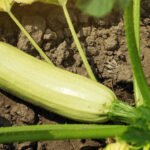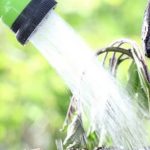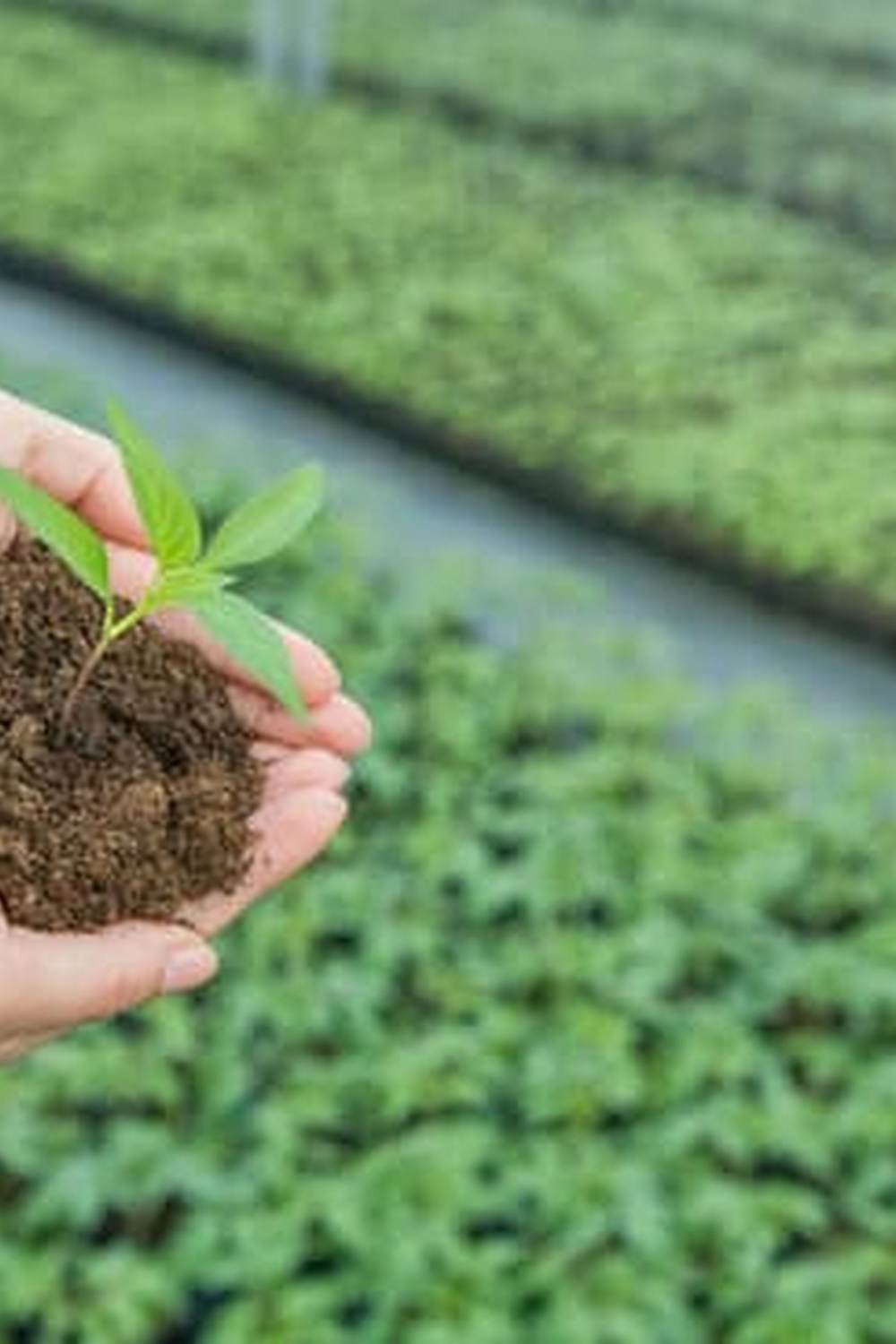Are you considering starting a vegetable garden in East Texas? Whether you are a beginner or an experienced gardener, vegetable gardening in East Texas can be a rewarding and enjoyable activity.
With the right knowledge and preparation, you can grow a variety of vegetables that thrive in the unique climate of East Texas. In this article, we will explore the ins and outs of vegetable gardening in East Texas, including the best vegetables to grow, soil preparation and maintenance tips, planting schedules, pest and disease management, watering techniques, harvesting and preserving methods, as well as community resources and events for local gardeners.
East Texas offers a diverse climate with warm temperatures and plenty of sunshine, making it an ideal region for vegetable gardening. From tomatoes to peppers to okra, there is no shortage of options when it comes to choosing what to grow. Understanding the specific needs of these vegetables in the context of East Texas’ climate is essential for successful gardening. The key to a thriving vegetable garden in East Texas lies in proper planning and preparation.
In the following sections, we will delve into the specifics of vegetable gardening in East Texas, equipping you with the knowledge and tools necessary to start your own garden or improve your existing one. We will cover topics such as soil preparation and maintenance, recommended planting schedules, dealing with pests and diseases commonly found in East Texas gardens, watering techniques suited for the region’s climate, as well as harvesting and preserving your bountiful produce.
Additionally, we will provide information on community resources and events tailored to vegetable gardening enthusiasts in East Texas. Keep reading to discover how you can make the most out of your vegetable gardening experience in this vibrant region.
Best Vegetables to Grow in East Texas Climate
When it comes to vegetable gardening in East Texas, it’s important to choose the right vegetables that will thrive in the climate and soil conditions of the region. Whether you’re a beginner or an experienced gardener, selecting the best vegetables for East Texas will set you up for a successful and bountiful harvest.
Warm-Season Vegetables
In East Texas, the warm climate makes it perfect for growing a variety of warm-season vegetables. Some of the best choices for your garden include tomatoes, peppers, eggplant, okra, squash, cucumbers, and sweet potatoes. These vegetables love the sunshine and warmth that East Texas provides during the growing season.
Cool-Season Vegetables
For cooler months in East Texas, consider planting cool-season vegetables such as broccoli, cauliflower, Brussels sprouts, carrots, lettuce, spinach, and kale. These vegetables can withstand the milder temperatures typical of fall and winter in East Texas and will provide you with fresh produce during these seasons.
Native and Heirloom Varieties
Additionally, consider growing native and heirloom vegetable varieties that are well adapted to the specific conditions of East Texas. Native varieties like Cherokee Purple tomatoes or Texas Wild Cucumber can thrive without much intervention and are naturally suited to the local climate. Heirloom varieties also often have traits that make them well-suited to specific regions, including disease resistance and tolerance to heat or humidity.
When planning your vegetable garden in East Texas, be sure to incorporate a mix of warm-season and cool-season vegetables as well as native or heirloom varieties to ensure a productive and diverse harvest throughout the year. By selecting the best vegetables for your specific region within East Texas, you’ll set yourself up for a successful gardening experience.
Tips for Preparing and Maintaining Soil for Vegetable Gardening
In order to have a successful vegetable gardening in East Texas, it is crucial to properly prepare and maintain the soil. The region’s unique climate and soil conditions require specific attention in order to ensure a bountiful harvest. Here are some tips for preparing and maintaining soil for vegetable gardening in East Texas:
1. Test the Soil: Before starting your vegetable garden, it’s important to test the soil to determine its pH level and nutrient content. You can get a soil testing kit from your local extension office or garden center. Based on the results, you can then make necessary amendments to ensure an ideal growing environment for your vegetables.
2. Amend the Soil: East Texas soils may require amendments to improve their texture, drainage, and fertility. Adding organic matter such as compost, aged manure, or peat moss can help improve soil structure and provide essential nutrients for plant growth.
3. Mulch: Applying a layer of mulch around your vegetables can help conserve moisture, suppress weeds, and regulate soil temperature. Organic mulches like straw, wood chips, or shredded leaves are ideal for East Texas vegetable gardens.
It is important to remember that each vegetable has its own optimal growing conditions; thus, it’s crucial to research individual requirements before planting. By following these tips and giving careful attention to the quality of your soil, you can set the stage for a successful vegetable gardening in East Texas.
Recommended Planting Schedule for East Texas
When it comes to vegetable gardening in East Texas, timing is everything. The climate and weather patterns in this region play a significant role in determining the best planting schedule for your garden. By following a recommended planting schedule, you can ensure that your vegetables have the best chance of thriving and producing a bountiful harvest.
Understanding the East Texas Climate
East Texas experiences a humid subtropical climate with hot, humid summers and mild winters. This unique climate presents both opportunities and challenges for vegetable gardening. Understanding the specific climate patterns in East Texas is crucial for determining the optimal planting schedule for different types of vegetables.
Recommended Planting Schedule
For cool-season crops such as lettuce, spinach, and kale, it is best to plant them in early fall or late winter to take advantage of the milder temperatures. Warm-season vegetables like tomatoes, peppers, and squash should be planted after the last frost date, which typically occurs around mid-March in East Texas.
It is essential to consult a local gardening guide or extension office to determine the specific planting dates for different vegetables based on your exact location within East Texas.
By following a recommended planting schedule tailored to the unique climate of East Texas, you can optimize the growth and yield of your vegetable garden. Proper timing can make all the difference in ensuring a successful harvest and a thriving garden throughout the growing season.
Dealing With Common Pests and Diseases in East Texas Vegetable Gardens
When it comes to vegetable gardening in East Texas, dealing with common pests and diseases is a crucial aspect of maintaining a successful garden. One of the most prevalent issues faced by gardeners in this region is the presence of pests such as aphids, caterpillars, and squash bugs. These pests can wreak havoc on vegetable plants if not addressed promptly and effectively.
In addition to pests, East Texas gardeners also contend with various plant diseases that can impact the health and yield of their crops. Some of the most common diseases include powdery mildew, blight, and root rot. Understanding how to identify these diseases and implement proper disease management strategies is essential for maintaining a thriving vegetable garden in this area.
To address these challenges, it’s important for East Texas gardeners to adopt integrated pest management (IPM) practices. This approach involves using a combination of cultural, biological, and chemical control methods to manage pest and disease issues while minimizing harm to the environment. Additionally, choosing disease-resistant plant varieties and practicing crop rotation can help mitigate the impact of pests and diseases on East Texas vegetable gardens.
By proactively addressing common pests and diseases through strategic planning and vigilant monitoring, East Texas gardeners can protect their crops and ensure a bountiful harvest.
| Common Pest | Control Method |
|---|---|
| Aphids | Introduce natural predators such as ladybugs or use insecticidal soap |
| Powdery Mildew | Apply fungicides or practice proper spacing between plants for better air circulation |
| Squash Bugs | Handpick them off plants or use row covers to prevent infestations |
Watering and Irrigation Techniques for East Texas Vegetable Gardens
When it comes to successful vegetable gardening in East Texas, proper watering and irrigation techniques are crucial for the health and growth of your plants. The climate in East Texas can be hot and humid, so it’s important to ensure that your vegetable garden receives the right amount of water to thrive. In this section, we will discuss the best practices for watering and irrigation in East Texas vegetable gardens.
One of the most important things to keep in mind when watering your vegetable garden in East Texas is to provide consistent moisture to your plants. This means ensuring that your garden receives an adequate amount of water, especially during the hot summer months. It’s also important to water your plants at the right time of day to prevent evaporation and ensure that they can absorb the water effectively.
In addition to regular watering, implementing an efficient irrigation system can be beneficial for your East Texas vegetable garden. Drip irrigation systems are a popular choice for many gardeners in this region as they deliver water directly to the base of the plants, reducing waste and ensuring that each plant receives sufficient moisture.
Mulching around your plants can also help retain soil moisture, reducing the frequency of watering needed. By implementing these techniques, you can help conserve water while promoting healthy growth in your vegetable garden.
| Watering Tips | Irrigation Techniques |
|---|---|
| Provide consistent moisture | Drip irrigation systems |
| Water at the right time of day | Mulching |
Harvesting and Preserving Your East Texas Vegetable Garden
Once your vegetables have reached maturity, it’s time to harvest and enjoy the fruits of your labor. Harvesting at the right time is crucial for getting the best flavor and texture from your vegetables. Here are some tips for harvesting your East Texas vegetable garden:
– Make sure to harvest vegetables like tomatoes, peppers, and zucchini when they are firm, colorful, and fully ripe.
– Leafy greens like lettuce and spinach should be harvested when the leaves are young and tender.
– Root vegetables such as carrots and radishes can be gently pulled from the soil when they have reached a desirable size.
Preserving the bounty of your vegetable garden is a great way to enjoy homegrown produce year-round. Here are some methods for preserving your East Texas harvest:
1. Canning: Utilize a pressure canner or water bath canner to preserve tomatoes, pickles, peppers, jams, and jellies.
2. Freezing: Blanch vegetables like green beans, peas, corn, and broccoli before freezing to retain their color and flavor.
3. Drying: Herbs can be air-dried or dried in a dehydrator for use in cooking throughout the year.
Healthier living means eating fresh fruits & veggies. Start planning your vegetable gardening in East Texas today to ensure you have access to fresh produce all year round.
Vegetable gardening in East Texas can be very rewarding but also challenging at times due to pests and diseases. It is important to keep an eye on your garden regularly so that you can catch any issues early. One way to prevent disease is by using crop rotation techniques – this will help reduce the build-up of soil-borne pathogens that can affect plant health.
Additionally, using organic pest control methods such as companion planting with marigolds or using neem oil can help keep pests at bay without resorting to harmful chemicals. By staying vigilant and taking preventative measures, you can ensure a healthier and bountiful vegetable garden in East Texas.
Community Resources and Events for Vegetable Gardening in East Texas
East Texas is known for its rich soil and favorable climate for vegetable gardening. Whether you are a beginner or an experienced gardener, there are many community resources and events available to help you maximize your garden’s potential.
One valuable resource in East Texas is the local agricultural extension office, which offers workshops, classes, and expert advice on all aspects of vegetable gardening. These offices often provide soil testing services, plant disease diagnosis, and information on pest management specific to the region. They also host events such as plant sales, garden tours, and hands-on gardening demonstrations.
Another great way to connect with fellow gardeners in East Texas is through community gardens. These shared spaces not only provide access to land for those without their own garden space, but they also foster a sense of community, knowledge-sharing, and collaboration among members. Many community gardens also offer educational workshops and volunteer opportunities.
Additionally, keep an eye out for local farmers’ markets and gardening clubs. Farmers’ markets are not only a great place to purchase locally grown produce and plants but also to network with local growers and gather gardening tips specific to the area.
Gardening clubs often organize group activities such as seed swaps, plant sales, and guest speakers who are experts in vegetable gardening in East Texas. By taking advantage of these resources and events, you can benefit from the collective wisdom and support of the East Texas gardening community.
Conclusion and Final Tips for Successful Vegetable Gardening in East Texas
In conclusion, vegetable gardening in East Texas can be a rewarding and fulfilling experience for both beginners and experienced gardeners alike. By following the recommended planting schedule, preparing and maintaining the soil, dealing with pests and diseases, and utilizing proper watering techniques, you can ensure a successful harvest of fresh and delicious vegetables.
One final tip for successful vegetable gardening in East Texas is to take advantage of the community resources and events available. Many local communities often have gardening clubs, farmers’ markets, and workshops that can provide valuable information, support, and resources for your vegetable garden. Connecting with other like-minded individuals can also provide motivation, inspiration, and camaraderie as you navigate through the ups and downs of vegetable gardening in East Texas.
Frequently Asked Questions
When Should I Start My Garden in East Texas?
In East Texas, it’s best to start your garden in late winter or early spring when the soil has thawed and the last frost has passed. This will give your plants the best chance to thrive in the warmer months.
What Zone Is East Texas in for Gardening?
East Texas is predominantly in USDA hardiness zones 7b and 8a for gardening. These zones indicate the average minimum winter temperatures, which is important for determining which plants will thrive in this region.
What Month Do You Plant Vegetables in Texas?
The best month to plant vegetables in Texas varies depending on the specific vegetable and the region within the state. Generally, many vegetables can be planted in February or March, while others may be better suited for planting in April or May as the threat of frost subsides and temperatures warm up.

If you’re looking to get into vegetable gardening, or are just looking for some tips on how to make your current garden better, then you’ve come to the right place! My name is Ethel and I have been gardening for years. In this blog, I’m going to share with you some of my best tips on how to create a successful vegetable garden.





